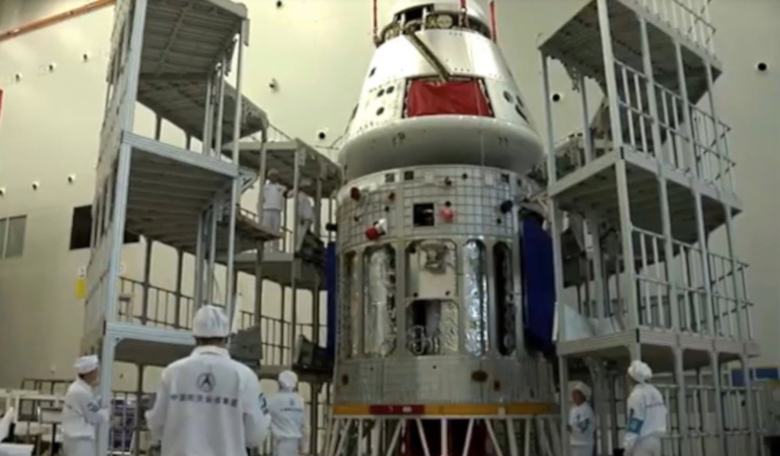The China Academy of Space Technology (CAST), a state-owned spacecraft and satellite manufacturer, has released a promotional video to show China’s new-generation crewed craft, that would allow astronauts to travel to the Moon and other deep-space destinations.
Looking a lot like the crew and service module from NASA’s Orion spacecraft which the US agency hope will carry their astronauts to the Gateway ahead of lunar surface missions beginning in 2024, China’s as-yet-named version also sports a two-module design that consists of a crew module and a service module. Like Orion, this will provide the power, propulsion and life support facilities for the crew packed inside.
The spacecraft is up to 9 metres (30 feet) long and has a maximum mass at liftoff of around 20,000 kilograms (20 tonnes). Conversely, Orion’s crew and service module combined have a launch mass of 25,867 kilograms (25.86 tonnes).
Orion is designed to sustain a crew of four, for three weeks and can stay docked to the proposed lunar Gateway for more than six months. The new Chinese spacecraft, will be capable of venturing beyond low-Earth orbit (LEO) and can carry four to six astronauts. China currently uses the less massive Shenzhou spacecraft for its journeys to LEO, however, Shenzhou is not without its limitations.
Although developed and operated by China, Shenzou is based around the Soyuz spacecraft after the nation signed a deal with Russia in 1995 for the transfer of Soyuz technology, including life support and docking systems. While it functions adequately for its purpose, it is not designed for example to withstand a high-velocity reentry into Earth's atmosphere or the harsh radiation environment of deep space that such missions will experience.
China is already working on the construction of a modular space station, and with this craft it will enable the nation to expand its exploration ambitions to the moon; something Chinese space officials have said the country is looking to carry out in the 2030s.
According to the China Manned Space Agency (CMSA), the new spacecraft will utilise the country’s Long March 5B heavy-lift rocket to make an uncrewed test flight in the first half of 2020. The Long March 5 is a Chinese heavy lift launch system which roughly matches the capabilities of the American Evolved Expendable Launch Vehicle (EELV) heavy-class vehicles such as the Delta IV Heavy.
China have also announced they are developing the Long March 9 – a Saturn V-class super-heavy-lift rocket comparable in capacity to NASA’s Space Launch System – that will be capable of lifting 50 tons to a Earth-Moon transfer orbit, and 44 tons to a Earth-Mars transfer orbit.
However, a test flight is currently dependent on what happens with the Long March 5, as after a couple of failed attempts, the rocket has yet to fly successfully.











